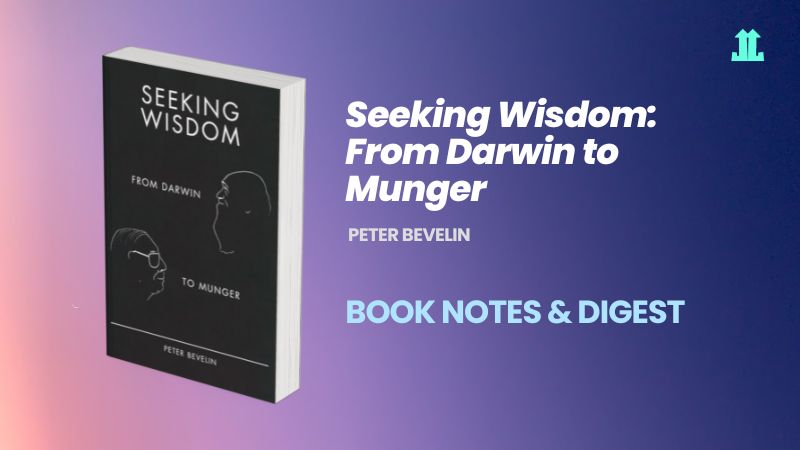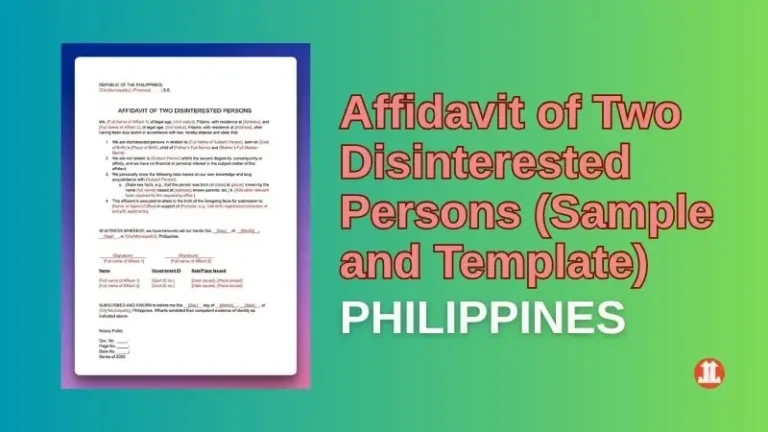Seeking Wisdom by Peter Bevelin: 4 Powerful Key Takeaways
“Seeking Wisdom: From Darwin to Munger” by Peter Bevelin is part of the 14 must-read books and a cornerstone for…

“Seeking Wisdom: From Darwin to Munger” by Peter Bevelin is part of the 14 must-read books and a cornerstone for anyone interested in the mechanics of decision-making, understanding human behavior, and the pursuit of wisdom.
Whether you’re a curious mind, an avid reader, or someone on the path to personal and professional development, this summary and digest are crafted just for you.
So, let’s embark on this journey of enlightenment together, armed with anecdotes, and insights.
What’s “Seeking Wisdom” All About?
At its core, “Seeking Wisdom” dives into how our understanding of psychology, biology, and physics can help us make better decisions, avoid mistakes, and acquire wisdom.
Bevelin draws inspiration from some of the greatest minds like Charles Darwin and Warren Buffett’s partner, Charlie Munger.
The book is a goldmine of interdisciplinary insights, blending knowledge from various fields to guide us toward smarter, wiser choices.
Key Takeaways

1. Understanding Our Mental Shortcuts
The Sh*tty Coin
I once found myself convinced that a certain crypto was a no-brainer. All the articles I read (or sought out) confirmed my belief. It wasn’t until I forced myself to read opposing viewpoints that I realized the risk involved. This was a classic case of confirmation bias. By seeking out contradictory information, I made a more informed decision, which in this instance, was to hold off on investing a sh*tty coin.
Our brain loves shortcuts. They’re quick, but boy, can they lead us astray! Bevelin talks about cognitive biases – those sneaky little mental traps that can cloud our judgment. Knowing about these biases is the first step toward wisdom.
Why do we have Cognitive Biases?
Imagine you’re walking through a forest and you see something rustling in the bushes. Your brain quickly jumps to the conclusion that it might be a predator, and you prepare to either fight or flee.
This quick judgment is an example of a cognitive bias – specifically, the availability heuristic, where our brain prioritizes immediate, recent information over a rational analysis of all possibilities.
In this case, it’s a survival mechanism. Our ancestors who quickly assumed danger were more likely to survive than those who stood around pondering.
Common Cognitive Biases
- Confirmation Bias: We love to be right. So much so, that we often only pay attention to information that confirms our preexisting beliefs. It’s like having blinders on that block out any contradictory evidence.
- Anchoring Bias: This is when we rely too heavily on the first piece of information we receive. For instance, if you first see a shirt priced at $100 and then find it on sale for $50, you might think it’s a great deal, not considering if it’s worth $50 in the first place.
- Sunk Cost Fallacy: Ever kept reading a book you didn’t enjoy just because you already invested time into it? That’s the sunk cost fallacy at work, making us stick with decisions because of previously invested resources (time, money, effort), even when it’s not the best choice moving forward.
5 Ways to Mitigate Cognitive Biases
- Awareness is Key: Simply knowing that these biases exist can help us catch them in action. It’s like having a mental bias detector that beeps whenever we’re about to fall into a cognitive trap.
- Seek Contradictory Information: Deliberately look for evidence that contradicts your initial beliefs or decisions. It’s like playing devil’s advocate with yourself to ensure you’re considering all angles.
- Delay Your Decisions: If possible, give yourself time to process information before making a decision. This can help reduce the impact of initial biases and allow for a more balanced perspective.
- Diversify Your Sources and Experiences: Expose yourself to different viewpoints, cultures, and experiences. This broadens your mental models and makes you less prone to over-relying on familiar shortcuts.

2. The Power of Simplicity
I recall working on a project that seemed overwhelmingly complex. The more we dived into it, the more entangled it became. Inspired by Bevelin’s insights, we decided to take a step back and ask ourselves what the project’s core goal was. To our surprise, many features we thought were indispensable were actually complicating the solution without adding significant value. By focusing on simplicity, we developed a more streamlined and effective approach that exceeded our initial expectations.
Ever heard of Occam’s Razor? It’s the idea that the simplest explanation is often the best one. Bevelin reminds us that complexity isn’t always a sign of intelligence; sometimes, it’s the simple truths that hold the most power.
In a world brimming with complexity, information overload, and endless choices, simplicity emerges as a beacon of clarity and efficiency. It’s not about dumbing down ideas or overlooking complexities; rather, it’s about distilling complexity into its essence.
Simplicity allows us to communicate ideas more clearly, make decisions more confidently, and solve problems more effectively. It’s the art of focusing on the essentials and eliminating the superfluous.
Examples of Simplicity at Work
- Apple’s Design Philosophy: Apple’s products, known for their clean lines and user-friendly interfaces, exemplify simplicity. Steve Jobs was a proponent of simplicity, believing that design should focus on users’ needs with as little design as possible.
- Einstein’s Theory of Relativity: Einstein once said, “If you can’t explain it simply, you don’t understand it well enough.” His theory of relativity, while profound and complex, is often introduced with simple thought experiments that convey its essence.
5 Tips to Cultivate Simplicity
- Identify the Core: Whether you’re solving a problem or communicating an idea, start by identifying its core. Ask yourself, “What is truly essential here?” This helps in stripping away the non-essential layers.
- Use Simple Language: When conveying ideas, especially complex ones, use simple, straightforward language. This not only makes your message more accessible but also forces you to understand the subject deeply.
- Embrace Constraints: Constraints can foster creativity and simplicity. Limiting your options forces you to think more creatively about how to achieve your goal with less.
- Practice Subtraction: Look at what you have—ideas, features, elements—and ask, “What can I remove without losing the essence?” This practice of subtraction can lead to more elegant solutions and clearer ideas.

3. Learning From Mistakes
I once launched a Facebook ad campaign without adequately testing the target audience’s preferences. The campaign’s performance was underwhelming, to say the least. Instead of seeing this as a setback, I analyzed the campaign to understand where I went wrong. It turned out that my assumptions about the audience’s interests were off the mark. By adjusting the targeting parameters and messaging based on what I learned, the next campaign was significantly more successful. This experience taught me the importance of data-driven decision-making and the value of learning from mistakes.
Both Darwin and Munger believed in learning from errors – theirs and others. Bevelin emphasizes that acknowledging and analyzing our mistakes is crucial for personal growth and wisdom.
Mistakes are an inevitable part of the human experience. They are proof that we are attempting, experimenting, and pushing our boundaries. However, the true value of mistakes lies not in making them but in our response to them. Each mistake carries within it the seeds of learning and growth, provided we are willing to analyze, understand, and apply the lessons learned.
Historical and Modern Perspectives on Mistakes
- Thomas Edison’s Invention Process: Thomas Edison famously said, “I have not failed. I’ve just found 10,000 ways that won’t work.” His relentless pursuit of the electric light bulb was filled with thousands of “mistakes,” each teaching him something new and bringing him closer to success.
- The Lean Startup Methodology: In the Lean Startup book, the methodology encourages rapid prototyping and “failing fast” to learn as much as possible in the shortest amount of time. This approach values mistakes as crucial learning opportunities that inform future iterations and decisions.
5 Strategies to Learn from Mistakes
- Adopt a Growth Mindset: Cultivate the belief that your abilities and intelligence can be developed through dedication and hard work. View mistakes as opportunities to grow rather than as reflections of your capabilities.
- Reflect and Analyze: After making a mistake, take the time to reflect on what happened. Ask yourself: What went wrong? What were the underlying causes? What can I learn from this?
- Seek Feedback: Sometimes, it’s challenging to see our own mistakes clearly. Seeking feedback from others can provide new perspectives and insights into what went wrong and how to improve.
- Implement Changes: Learning from mistakes isn’t just about understanding what went wrong; it’s also about taking concrete steps to prevent the same mistake from happening again. Implement the lessons learned into your decision-making process and strategies.
- Foster a Supportive Environment: Whether in personal or professional settings, create an environment where mistakes are viewed as learning opportunities. Encourage open discussions about failures and the lessons learned from them.

4. The Importance of Interdisciplinary Thinking
In my own career as a Media Buyer and SEO expert, I’ve found that understanding psychology and storytelling dramatically enhances my ability to create compelling ad campaigns. By studying how people make decisions (psychology) and what engages them (storytelling), I can craft messages that resonate more deeply and drive better results. This interdisciplinary approach has not only improved my work but has also made it more fulfilling.
The book encourages us not to confine ourselves to a single field of study. Wisdom comes from connecting dots across disciplines – a practice that Darwin and Munger excelled at.
The world is inherently complex, interconnected, and multifaceted. Challenges and opportunities rarely fit neatly within the boundaries of a single discipline. Interdisciplinary thinking enables us to view problems from multiple perspectives, drawing upon diverse bodies of knowledge to find innovative solutions. It fosters creativity, adaptability, and a deeper understanding of the world, making it an essential skill in both personal and professional contexts.
Examples of Interdisciplinary Success
- Leonardo da Vinci: Leonardo da Vinci, the quintessential Renaissance man, epitomized interdisciplinary thinking. His groundbreaking contributions to art, science, engineering, and anatomy demonstrate the power of integrating knowledge across fields.
- Modern Problem-Solving: Solutions to contemporary challenges, such as climate change, public health, and technology development, increasingly require interdisciplinary approaches. By integrating insights from science, economics, sociology, and beyond, we can develop more effective and sustainable solutions.
How to Cultivate Interdisciplinary Thinking
- Expand Your Knowledge Base: Actively seek out information and experiences beyond your primary field of interest or expertise. Read widely, attend lectures, and engage with content from different disciplines.
- Practice Lateral Thinking: Lateral thinking involves looking at problems from new angles and using creative approaches to find solutions. Practice this by challenging yourself to draw connections between seemingly unrelated concepts or by brainstorming non-traditional solutions to problems.
- Engage in Cross-Disciplinary Conversations: Collaborate and communicate with individuals from different fields. These interactions can spark new ideas, offer fresh perspectives, and deepen your understanding of complex issues.
- Reflect on Interconnections: Regularly take time to reflect on how different areas of knowledge connect and influence each other. Consider how historical events have shaped scientific developments, or how cultural norms impact economic trends, for example.
- Foster a Curious Mindset: Cultivate curiosity and openness to new ideas and perspectives. A curious mind is more likely to explore varied interests and seek out interdisciplinary connections.
Final Thoughts
Seeking Wisdom by Peter Bevelin is more than just a book; it’s a guide to living a more thoughtful, informed, and wise life. By understanding our mental shortcuts, embracing simplicity, learning from our mistakes, and seeking knowledge across disciplines, we can pave the way to true wisdom.
Until next time, stay curious, and keep seeking wisdom in all that you do. Remember, the wisest among us are those who never stop learning. Happy reading!







